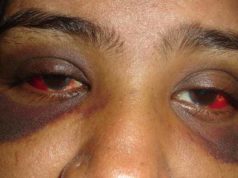An ingrown eyelash, especially when severe, can cause discomfort. It can occur on upper or lower lid of your eyes both on adults and kids. Read on to discover the causes, symptoms, how it looks in pictures plus the best ways treat or remove. Also, learn more on home remedies and what you can do to avoid or prevent it.
What is an Ingrown Eyelash & how does it form In Adults & Kids
What it is an ingrown eyelash?
This is a condition that is also called trichiasis. It is a condition that comes about when the eyelash is maligned and then grows back into the skin instead of growing away from the eye. The eyelid may become red, irritated, and watery and even a sensation of having grit or sand in the eye.[1]
Apart from that, sensitivity to light and pain may develop in due course. As Medlicker puts it, in very critical situations, infections may come in or even a permanent corneal scarring and vision loss may abound.
How does it form in Adults & Aged Individuals?
For those individuals who are advanced in age, the eyelashes may turn inwards then causing a condition that is known as entropion although it may not cause an infection. It is the frequent rubbing of the eyelashes with the cornea that will lead to irritation and discomfort although it may not automatically lead to an infection.[2]
How does it form in Children
It is not any different from the other cases. It comes about as a result of misalignment. The eyelashes growth takes a backward direction. The condition is not only painful but also irritating. If it is left untreated, it can cause real damage to the eye.
Ingrown Eyelash on Upper & Lower Lid Pictures
Below are pictures showing an ingrown eyelash on both the upper eye lid and the lower eye lid
Upper Eyelid
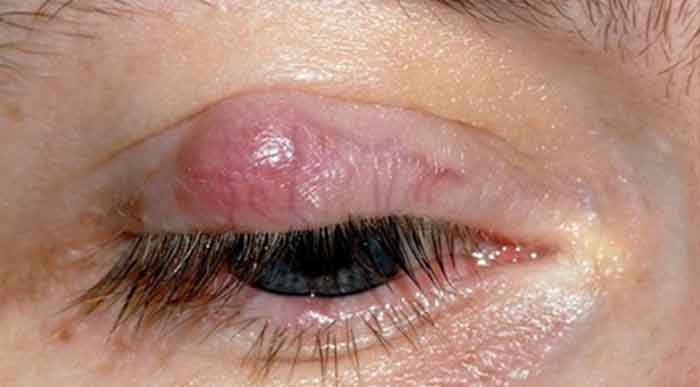
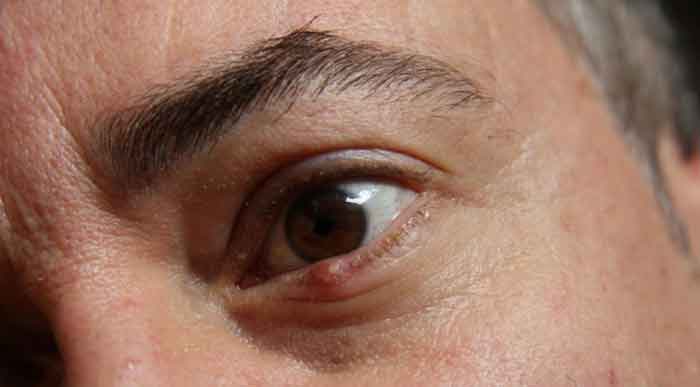
Lower Eyelid
Ingrown Eyelash Causes & Symptoms
There are so many things that can lead to you having ingrown hair on your eyelashes. The break down below gives you a light:
Congenital disorders
The most common congenital disorder that can bring about this condition is the epiblepharon. It occurs when the muscles that surround the eye region have a disorder. The disorder leads to the muscles that surround the eye cause the skin to push the eyelid inwards.
Heavily hooded eyelids
This situation only increases the likelihoods of you having the condition of ingrown eyelashes. They are mostly found in individuals of some specific nationalities. It is can be an individual of any age either male or female.
Malformed eyelids.
The other condition that could be a cause ingrown eyelash is the entropian or inverted eyelashes. It is most common in the elderly. It is very different from trichiasis because the eyelid is at fault and not the eyelashes.
It can affect either one or both the eye lids. With age, the upper eyelids become lax and the muscles that hold it in position become very weak. This brings about inverted eyelids and inverted eyelashes that you might not like at all.[3]
Eye infections from rubbing eyes with dirt.
Infections are also key contributors of ingrown eyelashes. There are different types of infections that include bacterial, viral and fungal infections of the eyelid. The microorganisms could enter the follicle of the eyelashes and then hinder proper growth of hair.
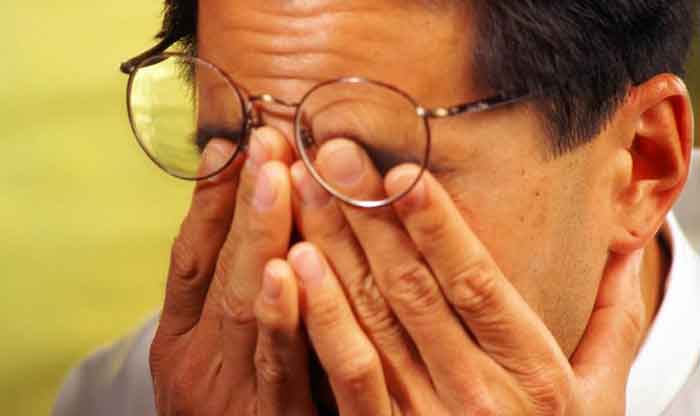
Apart from that, they can lead to the clogging of the small oil glands on the eyelids. These are the key factors that could lead to ingrown eyelash. The accumulation of dirt or chaff can also clog the pores and thereby disorient the growth of eyelashes.
Use of expired and contaminated cosmetics or eye makeups.
The eyelashes have their own resident bacteria. The moment you use a brush or do a makeup, the instruments get contaminated. Over the cause of time the bacterial load in the brush and the other instruments used builds up and this causes an increase in the chances of infections of the eyes or an allergic reaction with the use of the product.
Also, pieces of makeup might find their way into the eye and bring about redness and irritation. More serious infections that could lead to reduced vision can result from the scratch of the eye surface with an infected brush.[4]
Severe acne
Severe acne could also be termed as bumps that grow along the waterline of the eyelash. The eyelids are affected by the bumps. When your eye lash grows back into the rim of your eyelid, it brings about inflammation and irritation. Never pop the pimple or bump as this could lead to more and worse inflammation.
Pulling of eyelashes, (trichotillomania)
This condition occurs in children as well as adults and can be linked to obsessive compulsive disorder. It is a nervous condition and can be very troublesome. Plucking the lashes leaves the eyes without proper protection from bacteria, trauma and other physical injuries. This leads to ingrown eyelashes as discussed above.
Stye on eyelid
Sty on the eyelid: they are normal bumps on the eyelids but can cause a nuisance and irritation. They are normally caused by bacterial infections. It might go away within one or two weeks though and so no need to worry. The bacteria may advance into the hair root of the follicles and the tiny oil glands on the eyelid. This leads to alternation in growth pattern of the eyelashes.
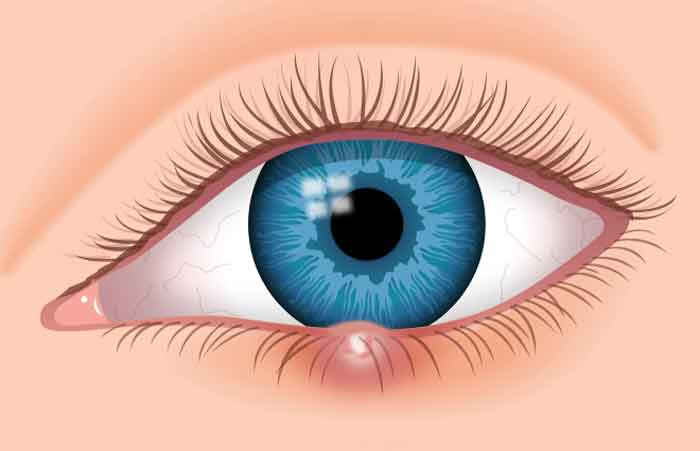
The obstruction and infection of the pores prevents the outward growth of eyelashes. These factors in the long run lead to ingrown hair in the eyelashes. The symptoms of ingrown eyelash may include the following:
- Red and inflamed eyelid
- Swelling on the eyelid
- Watery eyes
Blepharitis and eye infections
This is the inflammation of the eyelid rim or the margin. It is characterized by the meiobomian gland disorder. According to the MSD manual, most the people who had long struggles with the condition may more likely develop ingrown lashes. Inflammation of the eyelid is highly associated with bacterial infections in the eye.
The most common symptoms include:
- Blurred vision
- Burning sensation
- Eyes that won’t stop tearing
- Irritated red eyes
- photophobia
- Swollen eyelid[5]
Trauma or injury to the eye
Trauma or injury to the eyelid could also lead to ingrown eyelash. This can cause a breach in the continuity of the eyelid. When the injury heals, the skin along the eyelid can slightly b deformed and if the wound is left unattended to, it can bring about ingrown eyelash.
The types of injuries and traumas that can cause ingrown eyelash include: contact supports, thermal burns, complications that come about as a result of surgeries like ectropian repair.[6]
Autoimmune disorders
Autoimmune diseases are also precipitants of ingrown eyelash. They are specific ones and they include vernal keratoconjuctivitis. They might also be systemic autoimmune diseases like the Stevens Johnson Syndrome and the lupus.
Vernal keratoconjuctivitis is found in those of young ages. It can cause hard cobblestone like bumps on the upper eyelids and swelling and thickening of the conjunctiva. Lupus starts by attacking the normal body tissue and invaders. It leads to inflammation, damage and pain in different parts of the body.[7]
Psoriasis
Psoriasis could also lead to ingrown eyelashes. It is a skin condition that is very unpredictable but very irritating. The turnover of the skin cells is increased by about ten times the normal. This in the long run leads to thickening and scaling of the skin.
The thickening of the skin might lead to mal-positioning of the eyelashes. The end result is that it might lead to the formation of ingrown eyelashes.[8]
Ingrown Eyelash on Upper & Lower Lid Symptoms
Pimple on waterline
The pimples on the skin most of the times appear as a result of shaving and hence razor burn bumps. When your lash grows back into the rim of your eyelid, it causes inflammation that is then followed by inflammation and irritation
Eyelid swelling
The swelling is brought about as a result of the inflammation of the major tissues of the eyelid and the body reacting to the foreign intrusion of the body by infection and trauma. The inflammation brought about leads to eyelid swelling.
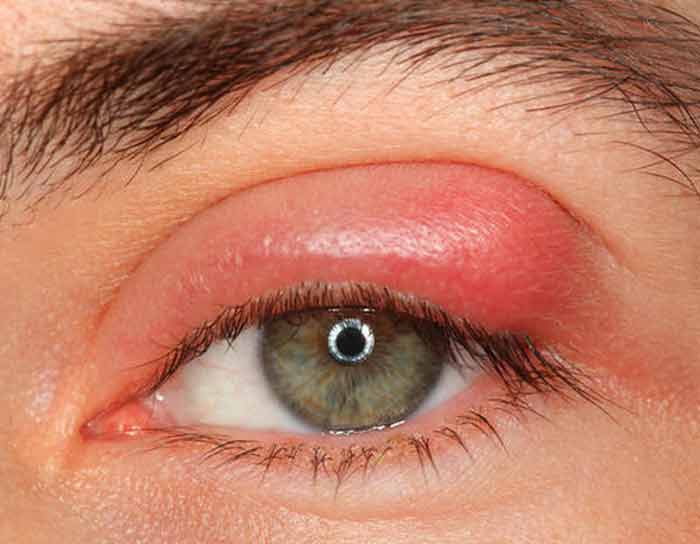
Pain when blinking
The resultant inflammation causes you to feel a lot of pain when you blink. Eyelashes that grow inwards may scratch your eyes. This is the reason as to why you will have the pain. The real cause of the pain is the corneal abrasion brought about by the ingrown eyelash.
The hair in your eye often feels like a foreign object. When you blink therefore, the eyelid rubs the ingrown eyelash and hence giving you a lot of pain. The help of a physician a can help you to remove or pluck the bent or ingrown eyelash.
Scratching
There are at times you might feel as if something is scratching your eye. This could be a result of eyelash growing inwards. The result of this is redness of the eye, constant watering and a feeling like you want to rub your eye.
Other symptoms on both upper and lower eyelids are blurred vision and inflammation of the eyelash follicles.
Ingrown Eyelash Removal at Home Remedies
Warm Compress
It is one of the easiest methods that are found at home for swollen eyelids. It can simply help to manage the symptoms that come with ingrown eyelash. It helps to increase the blood circulation and hence promoting quicker healing and resolution of inflammation.
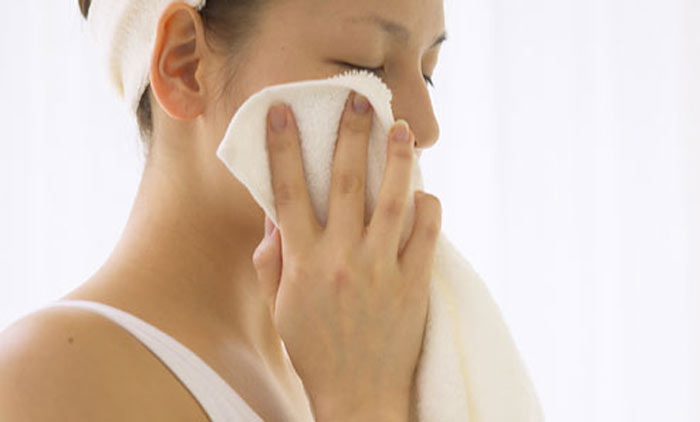
Apart from that, it helps to reduce pain, irritation and even redness. It is always easier to remove the ingrown eyelash when there is swelling. To carry out the procedure successfully, you should consider the following procedure:
- Take a clean clothe
- Warm the cloth with a an iron or warm water
- Apply the cloth to your eyes and leave it for about ten minutes
- Repeat the procedure twice for the best results.
Tea bag compress ingrown eyelash hair
Apart from that, it can be used before and after removal of ingrown eyelashes to reduce swelling and pain. The antibacterial activity of tea enable it to prevent infections that are likely to occur due to ingrown eyelashes. It also helps keep the area around the eye bacteria free and brighten it up. To do this,
- Take a tea bag of black tea.
- Soak the tea bag in warm water for 5 minutes.
- Take the tea bag out and put it in the fridge for 10 minutes.
- Now take the tea bag and place it on your eyes. Keep it there for about 15 minutes.
- Remove and through away the tea bag.
- Repeat this every day to reduce the swelling.
Application of natural antibacterial agents
There are various plant materials that possess very important properties that can help you deal with and treat ingrown eyelash without much strain. They may include:
Honey
Honey is not only a food product but also a medical agent. It is one of the best home remedies for eyelid infections. It has anti-bacterial properties. Using honey has no side effects so that makes it safe. This is an advantage over other products.
The other advantage of honey is that bacteria are not resistant to it. You can use honey directly on your eyelids to treat the infection causing to ingrown eyelashes. Alternatively, you can use it to prevent infections that might occur due to ingrown eyelashes. You can use honey directly on your eyelids or you can make a warm honey compress.
Procedure
- Add a few tablespoons of warm water in a bowl.
- Add a tablespoon of honey in it. Now mix well.
- Take a clean cotton cloth.
- Dip it in to the mixture for a minute.
- Remove excess water.
- Now apply it on your eyelid for 10 minutes.
Turmeric paste
Turmeric is an herb that is a part of many South Asian dishes. But along with its culinary uses, turmeric has been used since ancient times for its medicinal properties. It has both antibacterial and anti-inflammatory effects.
It can help relieve the pain and irritation that occurs due to ingrown eyelashes. Turmeric also helps reduce the swelling.
Procedure
- Take a teaspoon of turmeric powder in a bowl.
- Mix in aloe vera gel or rose water to make a paste.
- Apply this paste on the eyelids for 10 to 15 minutes.
- Remove the paste with cotton swab.
- Repeat this a few times a day for best results.
Always make sure it does not come in contact with your eyes. This is because it can cause irritation. In case it gets in your eyes wash immediately.
Coconut oil
Coconut oil has been used for its medicinal properties for centuries. Coconut oil has both anti-bacterial and anti-inflammatory properties. This helps prevent recurrent eye infections that might occur due to ingrown eyelashes.
Coconut oil can be used as an adjuvant for preventing complications after removal of ingrown eyelashes. Coconut oil also contains antioxidants that help improve the health of the skin around the eye.
- You can apply coconut directly to your eyelids using a Q-tip.
- Besides that, you can take a warm clean cloth and apply a little oil on it.
- After that, apply this coconut oil compress on your eyes.
- Leave it on for 10 minutes.
Aloe vera
Aloe vera gel or extract have both anti-bacterial and anti-inflammatory properties. There are many active agents present aloe vera like anthraquinones, salicylic acid and acetylated mannans and ploymannans. These agents help fight bacteria and reduce swelling.
Aloe vera gels are readily available in the market these days. You can also buy an aloe vera plant and use the fresh extract from the leaves on your skin. Aloe vera does not cure ingrown eyelashes but helps reduce the symptoms.
Procedure
- Gently clean your eyes and apply a little aloe vera on your eyelids.
- Leave it on for 10 minutes then wash.
- Make sure to avoid contact with eye because it can cause irritation.
Other Treatment Options & Prevention Measures for Ingrown Eyelash Hair
Epilation with tweezers
The removal of ingrown eyelashes is the most effective and proper treatment. The great importance of the eye should command great care when dealing with it. If you have a steady hand and are confident enough, you can remove the ingrown eyelash yourself.
Great caution should be taken when removing the ingrown eyelash. There should be adequate light when you try to remove the eyelash. The tweezer that you are using must be clean and of good quality. So that you can remove the grasp and remove the ingrown eyelash easily.
Electrolysis to get rid of ingrown eyelash
It uses electric current to kill the cells that are responsible for the formation of the eyelash. Is in fact a permanent hair removal although you might experience hair regrowth later on in the course of time. After the procedure, you will be prescribed antibiotics in order to prevent infections.
Surgery
This calls for the involvement of a special surgeon called the ophthalmologist. The doctor first numbs the eye with special drops. Then using a magnifying lens, the location of the ingrown eyelash is pinned down. The procedure is a fast symptom relief and can be used more readily for emergency chronic cases.[9]
Cryosurgery
In this case, nitrogen that is in liquid form is used to freeze and then destroy the hair follicle. This does away with the hair follicle completely.
Eyelash growing under skin Removal Video
Sources & CItations
[1] http://www.livestrong.com/article/70705-treat-ingrown-eyelash/
[2] http://diseasespictures.com/ingrown-eyelash/
[3] http://www.medhealthdaily.com/ingrown-eyelash/
[4] https://www.urmc.rochester.edu/encyclopedia/content.aspx?ContentTypeID=1&ContentID=724
[5] http://www.treatcurefast.com/eye/eyelash-ingrown-hair/ingrown-eyelash-upper-eyelid-hair-removal-treatment-symptoms/
[6] http://mddk.com/ingrown-eyelash.html
[7] http://patient.info/doctor/conditions-affecting-the-external-eye
[8] http://www.medhealthdaily.com/ingrown-eyelash/
[9] http://byebyedoctor.com/ingrown-eyelash/

